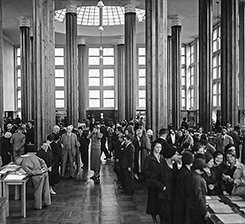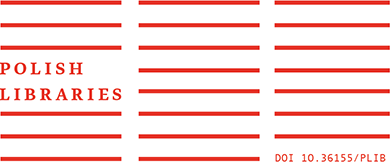ALL ISSUES

CREDITS / TABLE OF CONTENTS, p. 2–3
ARTICLES
A History of the Autograph Manuscript of Nicolaus Copernicus’s De revolutionibus, p. 6–23
Nicolaus Copernicus wrote his most important work, De revolutionibus orbium coelestium, in stages. The manuscript of this work, published in 1543 in Nuremberg, has survived. Immediately after the death of Copernicus, the manuscript of De revolutionibus… was in the possession of Bishop Tiedmann Giese. The next owner of the manuscript was Joachim Retyk, who lived in Cracow in the years 1554–1574. After the death of Rheticus, the manuscript of De revolutionibus… was handed over to Valentin Otho, a collaborator of Rheticus and later a professor at Wittenberg and Heidelberg. In Heidelberg, the manuscript was bound and became the property of Professor Jakub Christmann. In 1614, Jan Amos Komensky, as a Heidelberg student, bought the Copernicus’s manuscript from the widow of J. Christann. Under unknown circumstances, this manuscript was placed in the library of Otto von Nostitz in Jawor, Silesia, before 1665, and then in the library of his family in Prague. In 1945, it was taken over by the Czechoslovak state and transferred to the Library of the National Museum in Prague. In 1956, the government of Czechoslovakia donated the manuscript of De revolutionibus… to Poland. Since that year, it has been the property of the Jagiellonian University, Copernicus’s Alma Maer, and is now part of the collections of the Jagiellonian Library.
Adam von Gruttschreiber’s Album Amicorum: an Unknown Source for the History of Culture in Silesia in the Latter Half of the 16th and Early 17th Centuries, p. 24–78
This article discusses the album amicorum of Adam von Grutt-schreiber (1553–1619), which is part of the collections of the former Prussian State Library in Berlin and is now in the Jagiellonian Library in Cracow. Until 2016, it was considered lost in the war, and therefore, until recently, it could not be used in research on modern books of friendship. The article aims to introduce this very interesting object to scientific discourse. At the beginning, its owner is presented: a Silesian nobleman, courtier of the Dukes of Legnica and Brzeg, the lord of Michałów near Brzeg – and the remains of his architectural and sculptural patronage in his hometown of Michałów, which, according to the author of the article, was supposed to commemorate the founder himself and his family members. The album of friendship he kept was part of these commemorative undertakings. The article presents the main issues concerning the content of the album.
Stanisław Kostka Potocki’s Catalogue des Dessins as an Unknown Source for the History of Art Collecting, p. 79–127
It is widely known that Stanisław Kostka Potocki also collected drawings. Some general or fragmentary information on the topic is available almost in almost all the studies related to his art collecting activity. However, even today it is not specifically known what the collection of drawings he gathered looked like. Almost two hundred years after his death, the time has come to voice the some essential questions: How many drawings did the Count collect? What works were they? And, what do we know about their fate? The present publication is an attempt at a partial response to all those questions. Its goal is to make the text of the Catalogue des Dessins, kept in an autograph in the collection of the National Library of Poland, available in extenso to researchers. This will allow to provide arguably the most precise information on a certain section of the collection of drawings amassed by Potocki to date and show new research directions as well as the questions and problems that are have been identified here, so that in the future it is be possible to thoroughly evaluate the importance of the collection and its impact on the history of Polish – and possibly also European – art collecting.
The Seat of the Polish Library in Paris and Its Alterations, p. 128–176
This article attempts to reconstruct the history of the Polish Library in Paris. The first 200 years of the Paris hôtel particulier, raised on the Île Saint– Louis in the mid-17th century, is poorly documented. From the purchase of the house to serve as the Library in 1853, the building has undergone several modernizations: in 1854, a reading room and a library were prepared on the building’s second floor; in 1903–1904, a superstructure was added onto the outbuilding in which the Adam Mickiewicz Museum was housed; in 1909, a large public reading room was organized on the ground floor of the main body of the building. The first major alterations were conducted on the building in 1927–1929; initiated by Franciszek Pułaski, they were designed by Marian Lalewicz. At that point, all the installations were modernized, interiors redecorated, a new communication bay was added onto the main body from the side of the courtyard, the stable was altered to serve as a book storage space, a new architectural setting was introduced to the courtyard, and so too was antiqued visual identification of the rooms. In 1935–1936, new reception rooms and a lecture room on the first floor were arranged after Armand Rateau’s design. The Library edifice suffered greatly during WW II, while its post–war renovation has been limited to merely restoring it from those specific damages. It was only in 1999–2004 that the building was finally and thoroughly modernized: a vast number of infrastructural works were conducted, a lift was built, the book storage was rearranged into compact storage, and the former reading room on the ground floor was transformed into an auditorium. The design for that alteration was provided by the CR Architecture, Claude Costantini and Michel Regembal’s Paris architectural studio.
Examining Janusz Korczak’s Family History. Jakub Goldszmit – from Poland to the United States, p. 177–190
Genealogical surveys of the Henryk Goldszmit family, known around the world as Janusz Korczak, has produced significant results in recent years. Technological breakthroughs and the mass digitalization of archival records have spurred a paradigm expansion regarding the availability of information regarding the Old Doctor’s ancestors. It has become apparent that numerous documents pertaining to the members of this family have survived. One of the most outstanding examples to date is Jakub Goldszmit (1848-1912), the younger brother of Józef, Korczak’s father. The purpose of this article is to provide a retrospective on this remarkably active publicist and activist for Polish-Jewish integration in the second half of the 19th century as well as an inquiry challenge for the broader community of historical research. The co-editor of a recently published anthology of texts by Józef and Jakub Goldszmit, entitled O prawo do szacunku [For the Right of Respect], presents the literary legacy of Jakub Goldszmit and its impact on Polish-Jewish relationship studies and provides a deeper understanding of the standpoint Janusz Korczak had of himself the beneficiary of ideologies that were rooted within the Goldszmit family. The author reconstructs the fate of this famous figure after the year 1894 when Jakub Goldszmit, as a political emigrant, found himself in the United States of America (USA). Documents uncovered via the database available through Ancestry.com aid in the recreation of certain basic facts in terms of his activity across the ocean. Bibliographic sources indicate that in New York and Boston, Jakub Goldszmit participated in the cultural life of the Polish diaspora in America. The author of this article seeks the opportunity to locate concrete traces of his activities, such as the thorough exploration of libraries in addition to archives associated with specific Polish journals with which Jakub collaborated and oversaw at the turn of the 20th century.
Press Photography as a Source of Narration on Jewish Spaces in the Interwar Period in Poland, p. 191–221
This article aims to provide an introductory description of Nasz Przegląd Ilustrowany, the weekly supplement to Nasz Przegląd, an all-Poland pro-Zionist daily, published in the years 1924–1939. It was the only long-standing photographic supplement that remained in the market for so long in the interwar period. In the 1930s Warsaw, an abundance of photographers existed but not many specialized in press photography. The two most notable figures in the Polish–Jewish diaspora were Leon Forbert, a famous film producer, and Henryk Bojm, an outstanding screenwriter. Both contributed significantly to the development of Polish and Jewish cinematography. Both were enamoured by photography. Their atelier at Warsaw’s 11, Wierzbowa, was frequented by the Jewish and Polish world’s literary, artistic, and political élite. In Nasz Przegląd Ilustrowany, they printed various types of photography: portraits, photos from Jewish theatres, street photography, as well as numerous reproductions of the works of Jewish painters and printmakers. Today, their photographs are one of the few sources of knowledge on Jewish life in interwar Poland.
Relevance of Jean Twenge’s Publications to Research on Teenage Reading Culture, p. 222–246
Jean Twenge is a psychologist associated with San Diego State University who analyses generations’ differences including values, life goals, and the perception of the world of young Americans. This paper argues that Twenge’s scientific achievements should be known and used for analyses of teenagers’ reading culture not only abroad, but also in Poland. It is likely that a lot of behaviours observed among the next generations of Americans can be adequate also for Polish children and Polish adolescents. The reasons for the decline in the young generation’s interest in reading books should be perhaps sought in the psychological and sociological aspects, to which Jean Twenge pays attention. The article has discussed the availability of her book publications in Polish university libraries; the analysis of her texts’ citations was carried out, and the perception of her research by Polish and foreign scientists compared. To fulfil the assigned aims, the following methods were used: case study, critical analysis of source literature, bibliographic method, bibliometrics, and content analysis of documents.
Scholarly Correspondence of Fr. Prof. Wincenty Myszor with Polish Academic Institutions, Publishing Houses, and Bookshops Preserved in the Archdiocesan Archives in Katowice, p. 247–271
This paper presents the results of an analysis into the Polish scholarly correspondence of Fr. Prof. Wincenty Myszor, kept at the Archdiocesan Archives in Katowice. The research of a historical and bibliological character was conducted mainly through content analysis and document research. The analysed documents come from 6 fonds of the legacy bearing reference numbers from 169/1 to 169/6 and spanning 1970–2008. The content analysis identifies the scholarly institutions Fr. Myszor was in regular communication with, and which resulted in his preparation of articles, biographical notes, factual encyclopaedic entries, and translations of Early-Christian texts. The characteristics of the letters’ content are built upon with information on the documents’ form. Furthermore, prospects for further research are delineated; through this the correspondence from the legacy of Fr. Myszor can constitute a valuable and unique source of information.
Principles for Developing the Collections at the National Library of Poland, p. 272–296
The most important task regarding developing the collections of the National Library of Poland is considered to collect the entirety of printed and digital materials, and the most valuable historic manuscripts: books, periodicals, newspapers, musical scores, atlases, maps, globes, and ephemera documenting social life, as well as sound and audio-visual recordings and electronic publications. The collections are built by means of the legal deposit, purchases, donations, exchanges, acquisitions and the making of copies. Traditionally, national libraries archive the entire publishing output of their country. Poland and some other countries add exteriorica to this, that is publications from outside the state’s territory but pertaining to the country or nation in question. With specific exceptions, one copy of every publication is preserved in perpetuity, including a copy of each subsequent edition. In recent years the National Library of Poland has been returning to its fundamental task of building a complete collection of Polish publications and an archive of key historical Polish writings.

